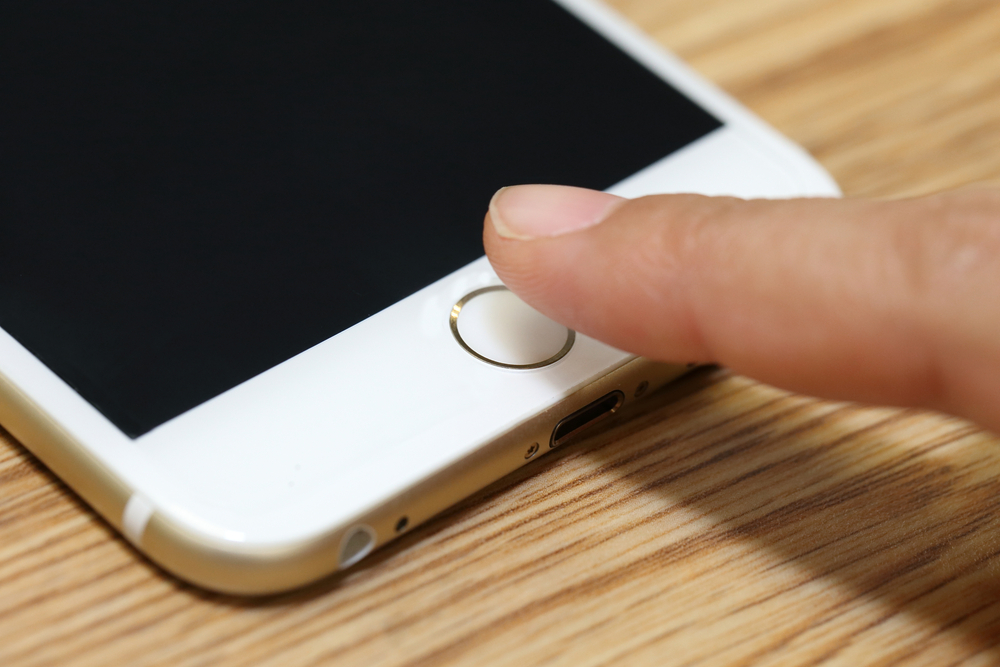Apple Hits Potential Bottleneck with iPhone 8 (Report)
A report suggests Apple is having difficulty moving its fingerprint sensor under the iPhone 8's edge-to-edge screen. And the alternatives don't sound very appealing.
It's widely assumed that Apple's next iPhone is going to sport an edge-to-edge display — most likely featuring an OLED panel. What's less clear is how that new design will accommodate the Touch ID sensor the iPhone uses to unlock phones and confirm Apple Pay payments. And a new analyst report casts even more doubt on what's going to happen to the fingerprint sensor.

Assuming Apple goes through with the edge-to-edge screen everyone's expecting for the iPhone 8 — something smartphone makers like LG and Samsung have already pulled off with the G6 and Galaxy S8, respectively — that means finding a new home for the Touch ID sensor, which resides under the home button on current iPhone models. In an ideal world, Apple would move that sensor underneath the display, and several rumors and Apple patents suggest that's what the company's trying to do.
However, in a research note posted by MacRumors, Cowen and Company analyst Timothy Arcuri says that Apple is running into roadblocks moving the fingerprint sensor under the iPhone 8's front display. And that may force Apple to choose between some very unappealing Plan Bs.
MORE: Galaxy S8 vs iPhone 7: Samsung Puts Apple on Notice
Specifically, Arcuri's report says that Apple's efforts to use its in-house AuthenTec sensor are creating production bottlenecks for the iPhone 8. Arcuri bases that claim on his own supply chain field work.
If Apple can't ramp up production yields using an under-the-glass fingerprint sensor, it's going to have to come up with a different idea. And the options Arcuri envisions don't sound particularly enticing.
Apple could do away with the Touch ID sensor entirely in the iPhone 8, instead using facial and iris recognition features reportedly in the works for the new phone. However, Arcuri notes security concerns with this approach and potential conflicts with Apple Pay. In a second scenario proposed by Arcuri, Apple moves the fingerprint sensor to the back of the iPhone, just like Samsung did with the Galaxy S8. (Just make sure not to put it too close to the camera like a certain smartphone we could name did.)
Apple's other option, according to Arcuri, would be to delay production on the iPhone 8, pressing ahead with planned iPhone 7s and 7s Plus releases for September. In this scenario, Apple would still announce all its new phones at a September press event, as it has in recent years.
A growing number of reports suggest an iPhone 8 delay until later in the fall is possible. Given the importance of the iPhone to Apple's bottom line, though — the phone accounts for two-thirds of the company's revenue — it seems that Apple would want to avoid anything that cut into its holiday iPhone sales.
Arcuri research doesn't paint a completely grim picture for the upcoming iPhone, though. Another research note from the Cowen and Company analyst, also published at MacRumors, suggests that all new iPhone models this year will ship with 3GB of RAM. That would be an upgrade in RAM for whatever model replaces the 4.7-inch iPhone 7.
- 9 Tips for Finding the Right Phone
- iPhone 8 Rumors: What to Expect from the 10th Anniversary iPhone
- How Much Will the iPhone 8 Cost?
Get instant access to breaking news, the hottest reviews, great deals and helpful tips.
Philip Michaels is a Managing Editor at Tom's Guide. He's been covering personal technology since 1999 and was in the building when Steve Jobs showed off the iPhone for the first time. He's been evaluating smartphones since that first iPhone debuted in 2007, and he's been following phone carriers and smartphone plans since 2015. He has strong opinions about Apple, the Oakland Athletics, old movies and proper butchery techniques. Follow him at @PhilipMichaels.

